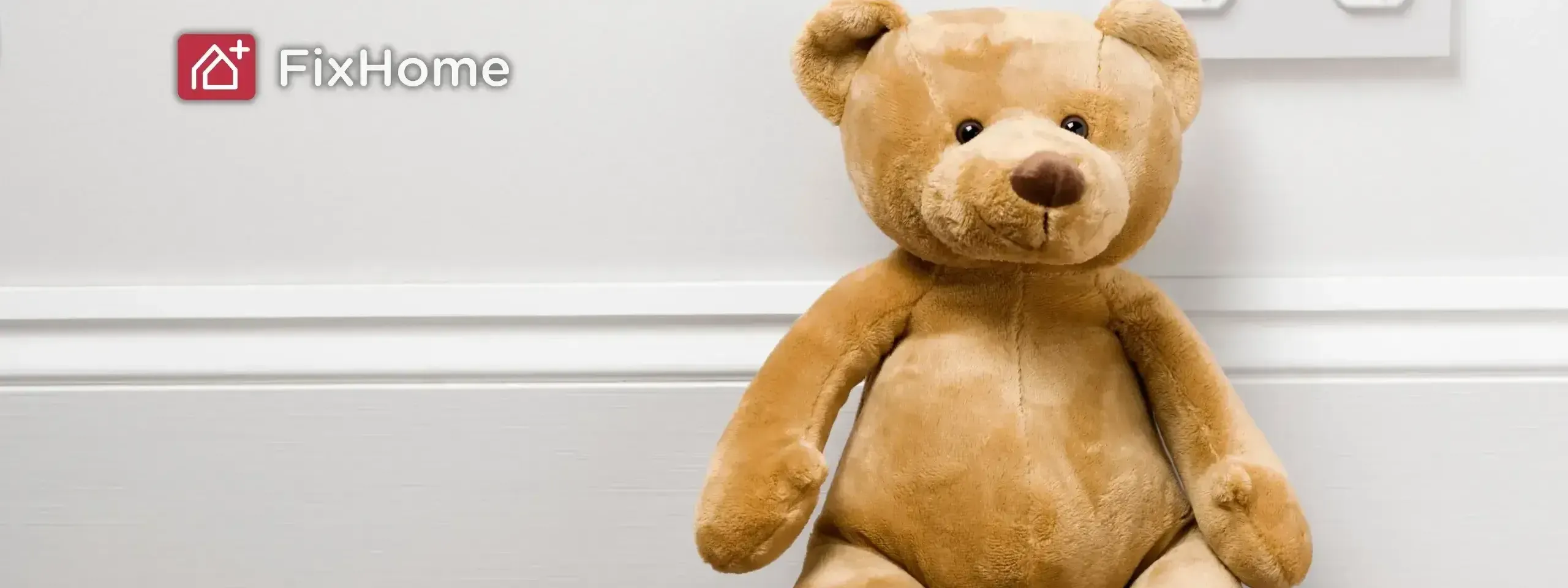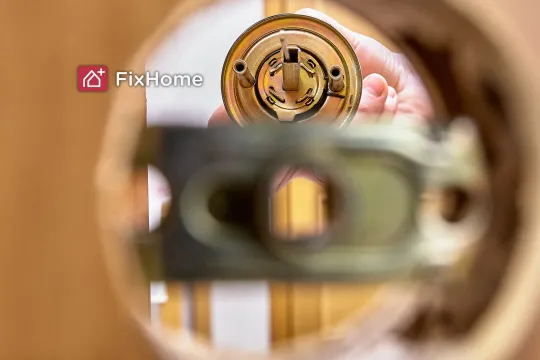Picture this: your tiny tot has just mastered crawling, and suddenly your home turns into a gym with hidden dangers. Childproofing a home is not a preventive measure. It's a requirement to rescue your baby from the dangers of daily life. As a parent who learned this by trial and error, I know the sheer urge to rescue your baby from every possible danger. When my toddler managed to open a cabinet and get to dangerous chemical materials despite my careful supervision, I discovered that good intentions aren't enough. Instead this you need a systematic approach to childproofing.
The reality is that children are naturally curious and surprisingly resourceful when it comes to what they shouldn’t do. What seems obviously dangerous to us may be exciting and accessible to a child. This is not a comprehensive guide to making your home a child-proof fortress. Here, I’ll write about six basic safety measures that are at the heart of any effective child-proofing strategy. This will give you the confidence to create a safe environment where your children can safely explore and develop.
Key Takeaways
Quick Navigation:
- Baby gates
- Furniture anchoring
- Corner protectors
- Outlet covers
- Cabinet locks
- Toilet locks
- Wrapping It Up
- F.A.Q.s
To make your home safer for your child, start with these key childproofing steps:
- Use baby gates - Block off stairs and unsafe rooms to prevent falls and limit access to danger zones.
- Anchor TV & furniture to prevent tip-overs - Secure dressers, bookshelves, and TVs to the wall to stop tip-over accidents.
- Add corner protectors - Cover sharp edges on tables, counters, and wall corners to reduce injury risk.
- Cover electrical outlets - Keep electrical outlets covered to protect against shocks and electrocution.
- Secure cabinets - Use locks on kitchen, bathroom, and medicine cabinets to keep harmful items out of reach.
- Use toilet locks - Prevent curious children from opening the toilet, reducing the risk of exposure to germs.
These simple measures tackle common household safety risks.
Why It Matters to Protect Your Child and Your House
These aren’t just about small bumps and bruises. Many are serious injuries that lead to emergency room visits, hospital stays, or even permanent disabilities.
The scariest part? Accidents happen in seconds. Furniture can tip over in an instant when a toddler climbs on it. Electrical injuries can cause burns or even long-term heart problems. As parents, we often don’t realize how quickly our kids develop new skills. What was out of reach yesterday might be their new challenge today.
The impact goes beyond physical injuries. Emergency room visits for preventable accidents can cost thousands of dollars. But the emotional toll is even greater. Seeing your child hurt in the place they should feel safest is heartbreaking. Taking steps to childproof your home not only protects your child but also gives you calm.
Experts agree that childproofing isn’t about making your home sterile. It’s about removing the biggest dangers while still giving your child the freedom to explore and learn.
Baby Gates: Your First Line of Defense
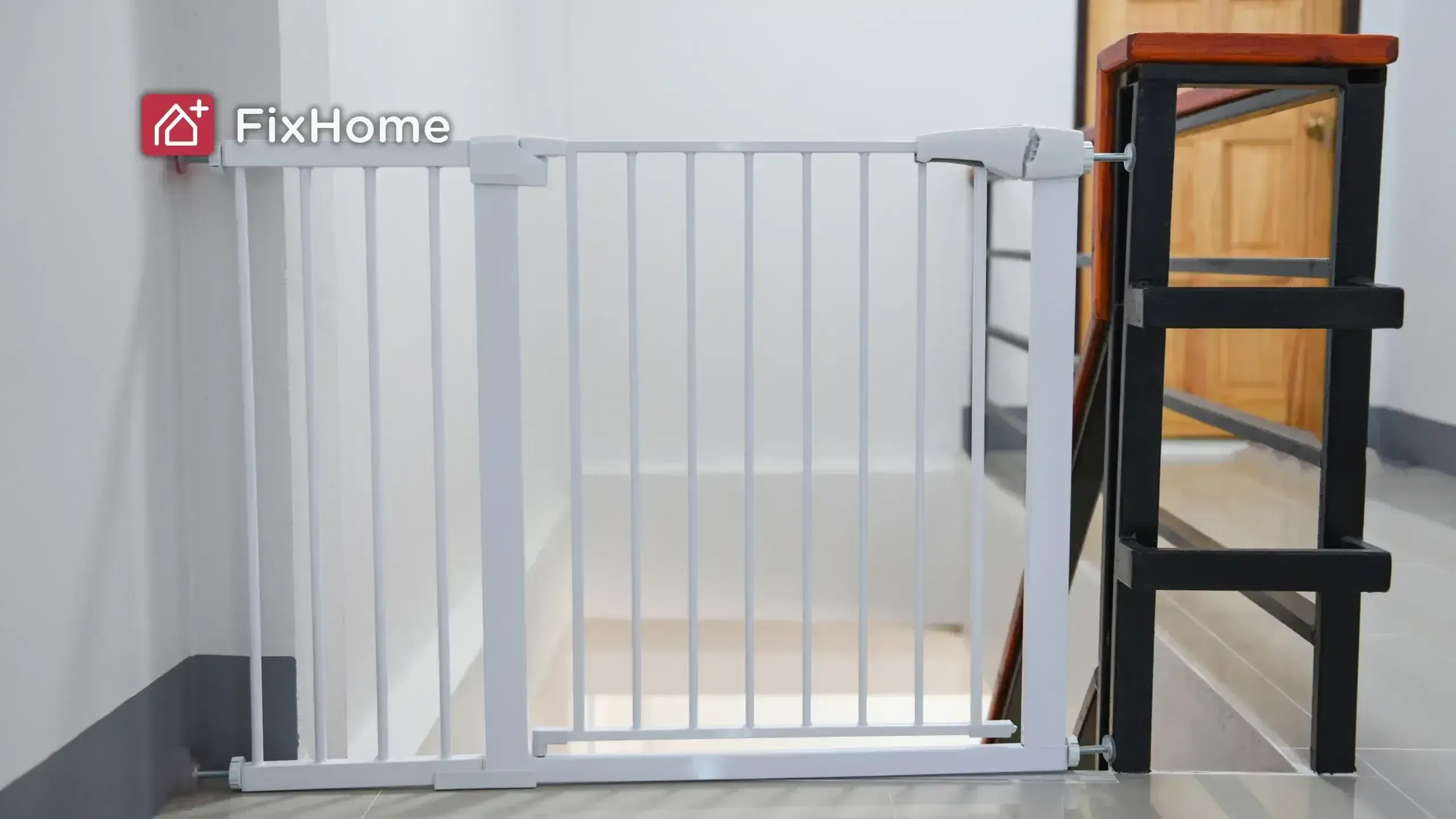
Baby gates are the cornerstone of childproofing a home, acting as the first line of defense against household hazards. They keep curious, mobile babies and toddlers away from dangerous areas like staircases, kitchens, and rooms with hazardous objects. Stairs are especially risky, as falls are a common cause of serious injuries in young kids. Installing gates at the top and bottom of staircases creates safe zones and significantly reduces these risks.
Beyond stair safety, baby gates give parents peace of mind by restricting access to unsafe areas while allowing children to explore safely. They can also separate children from pets and block access to porches or patios.
When choosing a gate, prioritize sturdy designs with childproof locks and the right height to prevent climbing. Hardware-mounted or retractable gates are ideal for stability and ease of use. Since babies start crawling and walking as early as six months, installing gates early ensures your home is ready for their growing mobility.
In short, baby gates are a must-have for childproofing. They create reliable barriers that prevent falls, restrict access, and provide a safer space for children to explore. Install baby gates at the top and bottom of staircases and in doorways leading to unsafe areas. Choose hardware-mounted gates for stability and start using them as soon as your baby begins crawling.
Secure Furniture & TVs: Preventing Tip-Over Accidents
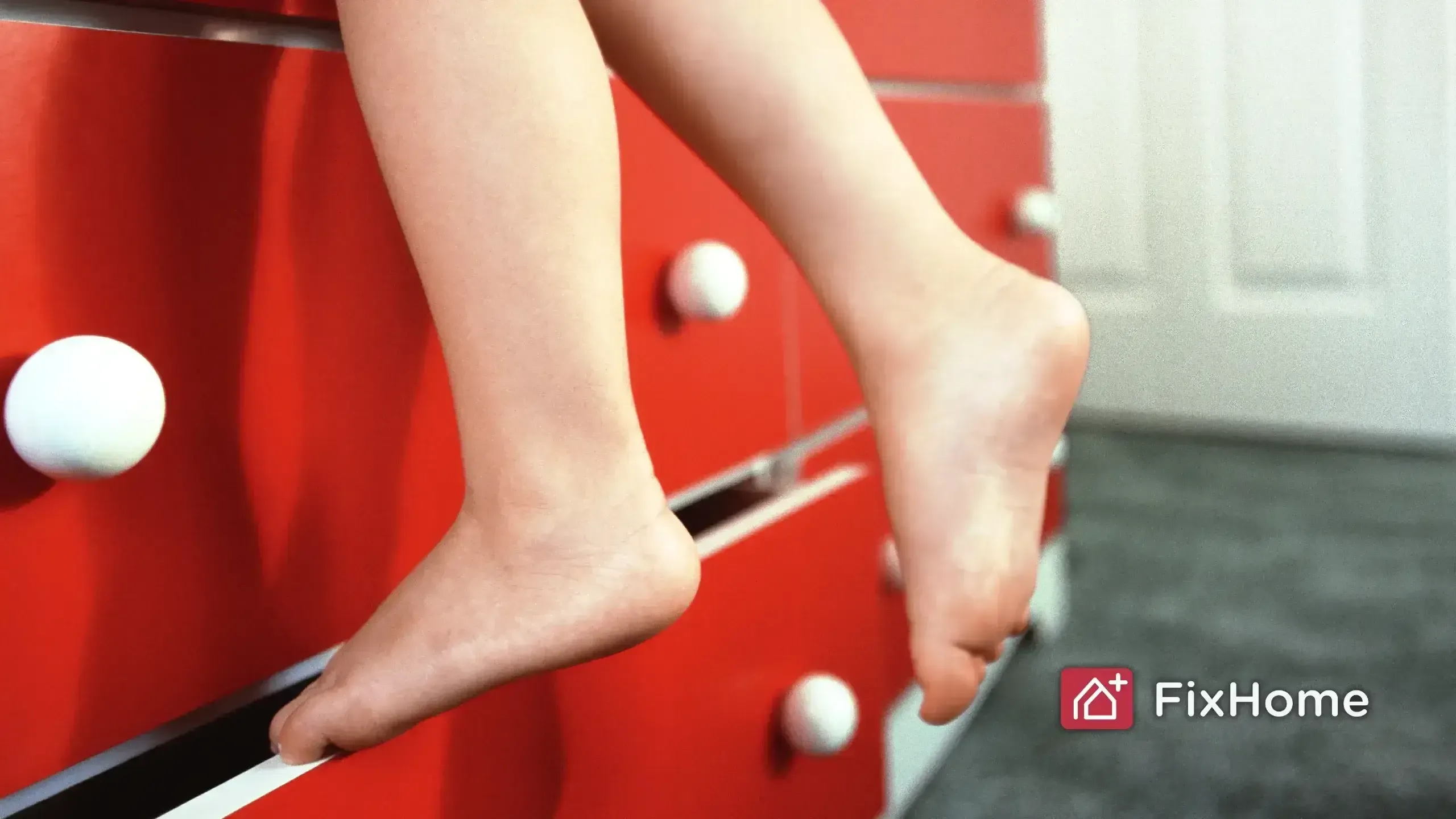
Furniture tip-overs are among the most under-recognized dangers in home safety, so furniture anchoring is a number-one priority when childproofing. They happen in a flash and cause ghastly injury.
Kids want to climb, and what is safe for adults can be deadly when a toddler pulls on an open drawer or climbs up a shelf. TVs are especially hazardous. Modern flat-screen televisions are front-heavy and will tip forward under light pressure with ease, threatening head trauma.
Secure tall, slim pieces like bookcases and dressers, especially those over 30 inches high. Kitchen appliances, entertainment centers, and even filing cabinets can prove dangerous if not secured.
Anchoring methods vary according to the type of furniture. Wall stud-mounted L-brackets are the best option, and anti-tip devices and safety straps are good for rentals where drilling is not allowed. Mounting TVs eliminates the largest tip-over risk, but safety straps can secure them in the absence of mounting.
Corner Protectors: Softening Sharp Edges Throughout Your Home
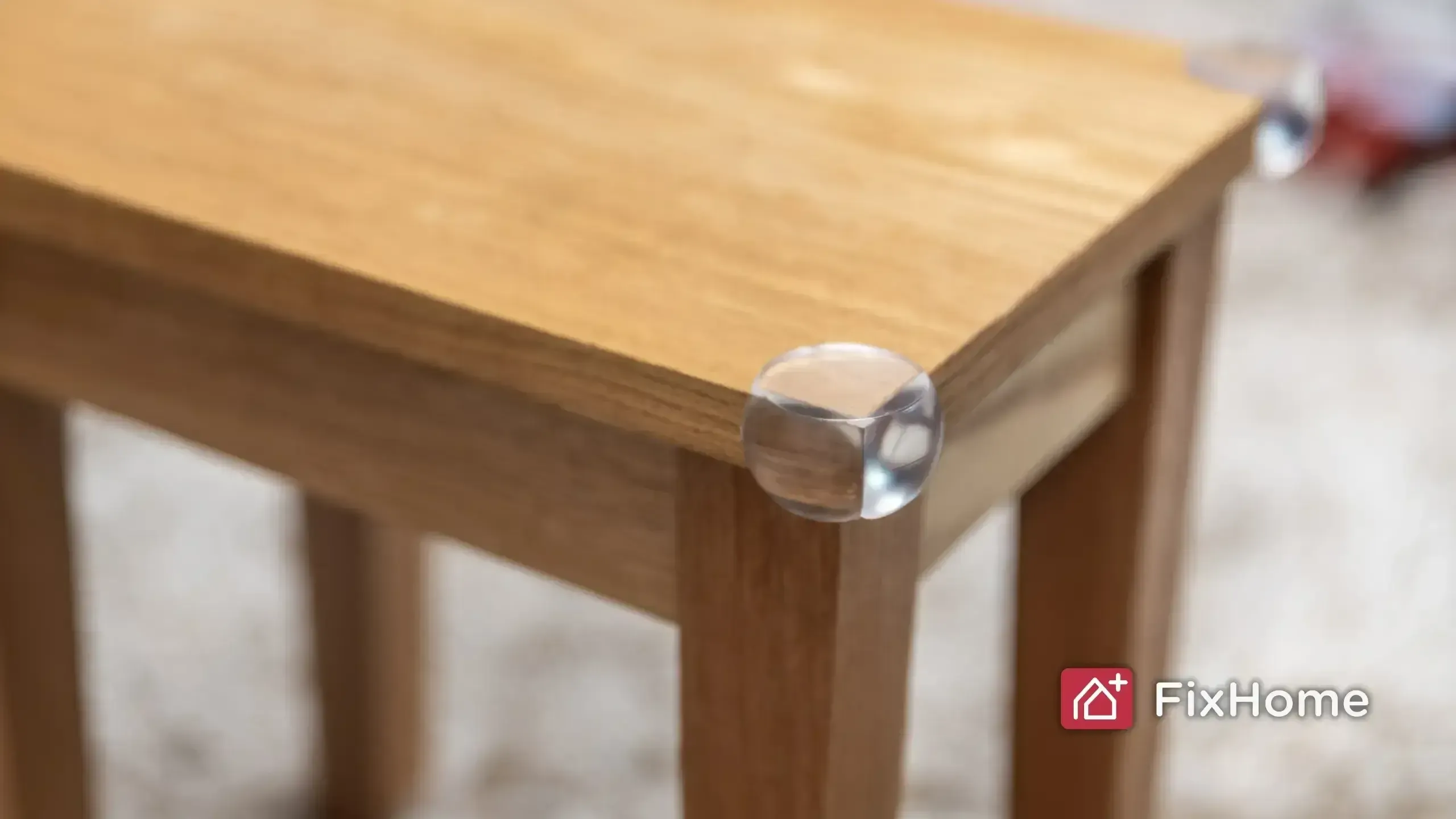
Sharp corners and edges are constant hazards for children learning to walk and explore. Key areas to protect include coffee tables, end tables, fireplace hearths, kitchen islands, and any low furniture with sharp edges at a child’s head height. Window sills, stair railings, cabinet corners, and wall corner protectors are also essential for reducing risks. Think about where your child moves and identify surfaces they might bump into during play or falls.
Suppose you are worried about the appearance of your furniture. In that case, clear silicone corner guards are great for maintaining your furniture’s look while adding safety. Foam protectors make excellent cushioning and come in various colors to match your decor. Rubber guards provide the most durable protection, but are more noticeable. Adhesive-backed protectors work well for temporary use, while screws or brackets are better for permanent solutions.
In humid or high-temperature areas like kitchens or bathrooms, corner protection becomes essential as soon as children start pulling themselves up and cruising along furniture.
Outlet Covers: The Essentials of Electrical Safety
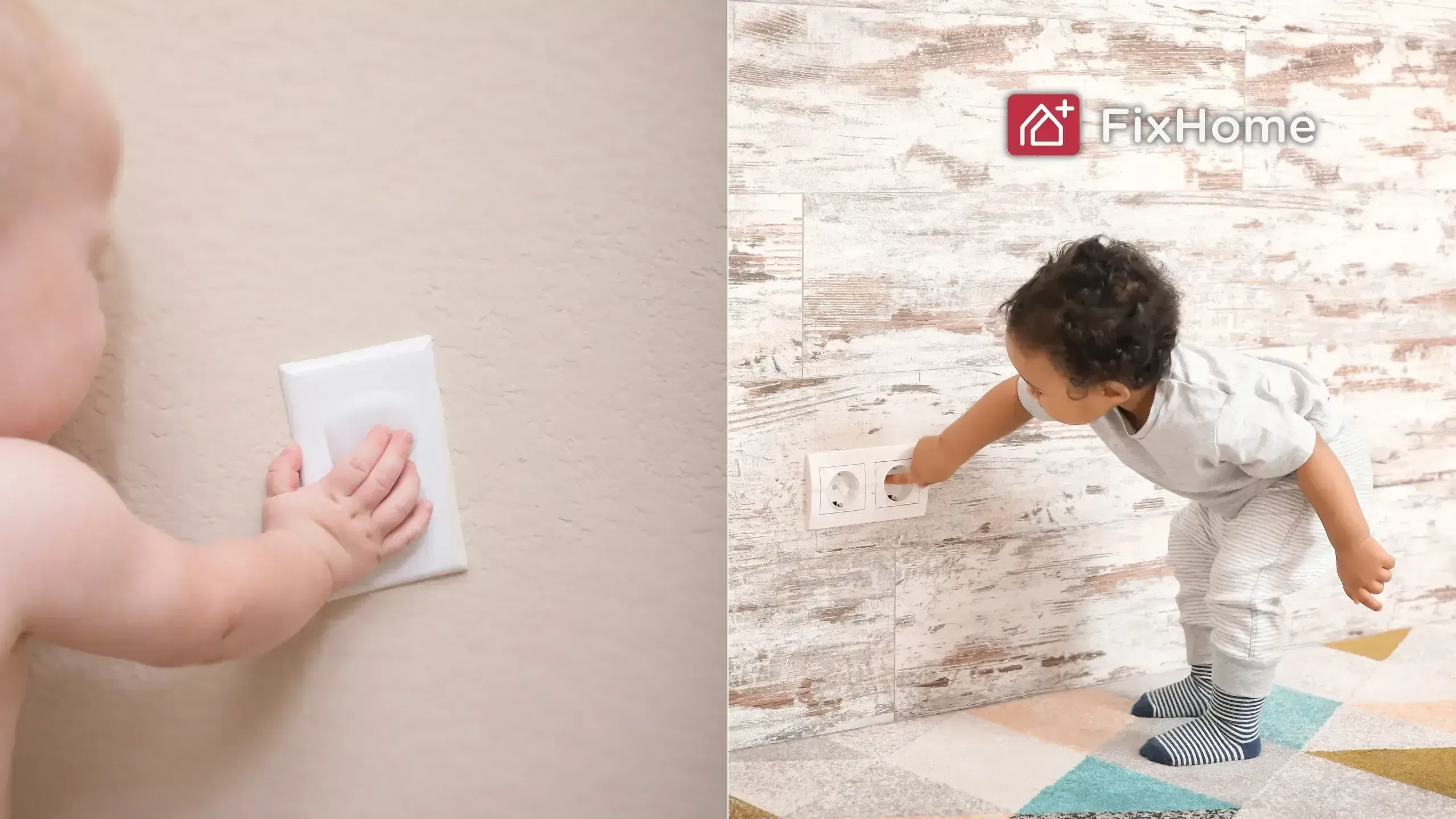
Electrical outlets present one of the most significant and immediate dangers to curious toddlers. Outlet protection is, therefore, an essential part of any childproofing strategy. Outlets attract children with their hole size and strategic positioning, being low and convenient throughout the home. What makes electrical shock injuries even more traumatic is that they can result in internal damage that may not necessarily be evident, including cardiac arrest and third-degree burns.
Let's consider some outlet protections to allow you to choose the most appropriate solution for each room in your house. Basic plastic outlet plugs are inexpensive and widely available, but they can become choking hazards when kids manage to pull them out, and adults just plain forget to replace them after they use an appliance. Sliding outlet covers provide child-resistant protection without adult removal access. Self-closing outlets are the top of the line, shutting off by themselves when plugs are pulled out, but require electrical wiring that must be installed by a licensed electrician.
Room-by-room electrical hazard assessment discovers that not all outlets require the same level of protection. Living rooms, playrooms, and kids' bedrooms need extensive coverage due to extended child exposure. Kitchen outlets deserve special attention as they're frequently used and typically at child height. Bathroom outlets require ground-fault circuit interrupter (GFCI) protection and additional protection due to proximity to water. Basement and garage outlets may need industrial-strength protection if kids have access to these areas.
Don't forget to teach children about electrical safety as they get older! As children learn to reason, although physical protection remains essential for young children, education plays an increasingly larger role. For many families, explaining electricity's dangers in a way related to their age helps children understand why certain areas are not accessible, providing an added measure of protection over physical barriers.
Cabinet Locks: Securing Dangerous Items from Curious Hands

Kitchen and bathroom cabinets store dangerous materials like toxic substances, knives, and medication, so cabinet locks are a crucial aspect of babyproofing. The locks act as a buffer between inquisitive children and dangers, but also grant adults convenient access.
Start by securing the most hazardous locations at home. Under-sink cabinets containing cleaning supplies, medicine cabinets, and lower kitchen cabinets containing sharp or breakable items should be a priority. Since children are likely to climb as they mature, even the upper cabinets are a hazard.
Choose locks that suit your needs and cabinet type. Magnetic locks are good for security and easy adult access, but may be pricey. A safety latch serves as a budget choice but may be harder for adults to operate. Adhesive strap locks are perfect for rentals but may not hold up to older children, whereas sliding locks look like a compromise.
Baby Toilet Locks: Often Overlooked but Critical Safety Measures
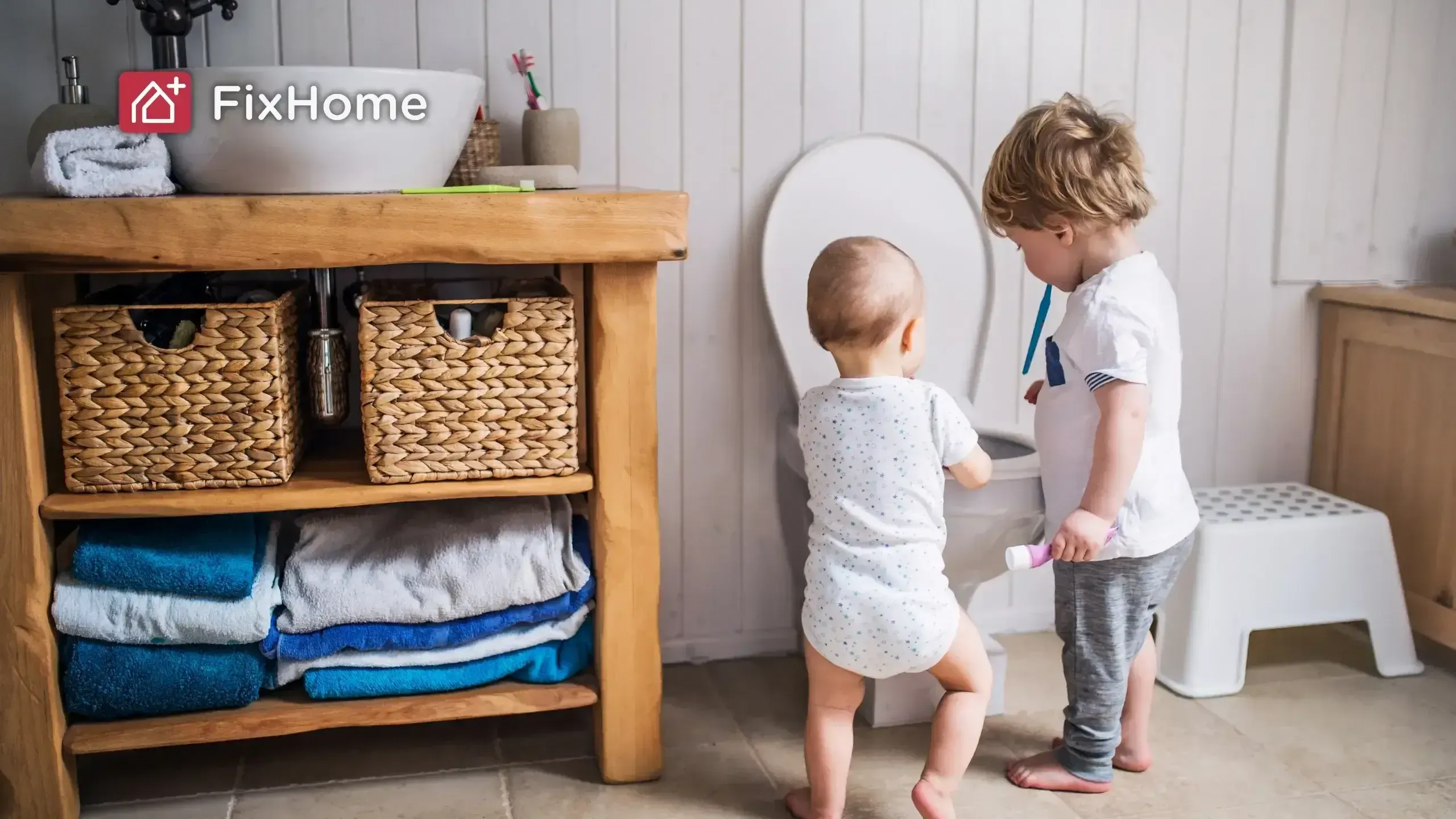
Toilet locks are a significant but oft-overlooked component of babyproofing, protecting toddlers from the dangers of drowning and contamination. A toddler toilet lock prevents water entry that can quietly drown them, as they can drown in two inches of water. Toilets also have lethal germs, and thus, baby-proof toilet seats are the key to keeping them hygienic and safe.
A less obvious but still serious danger is toddlers falling into toilets headfirst. They can become trapped because their heads are large and their necks are less muscular. That's why installing a toilet seat latch on your toilet is so important as a safety feature.
The right lock is achieved by finding a balance between adult convenience and child resistance. Adhesive locks are easy to install but may not be strong enough for determined children. Clamp-type locks are more secure but may be harder for adults to operate. Sliding locks, which are attached to the seat of the toilet, present a good balance between safety and convenience.
Proper installation is guaranteed by maintaining lock compatibility with toilet seat designs. Potty training preparation is important; install secure but easily accessible locks during potty training to avoid frustration and accidents.
Wrapping It Up
Creating a truly safe home environment extends far beyond installing these six essential childproofing elements, though they form the critical foundation upon which comprehensive home safety is built. These must-have safety measures: baby gates, furniture anchoring, corner protectors, outlet covers, cabinet locks, and toilet locks, just address the most common and serious hazards that injure children in their homes every day. However, effective childproofing is an ongoing process that evolves with your child's development and your family's changing needs.
Parents already have so much to think about when it comes to their children's safety. So knowing you've taken steps to make your home safer and keeping up with regular maintenance brings calmness. When you know you've taken these first steps to eliminate the most serious household dangers, you can focus on the joy of watching your children explore, learn, and grow in a space designed with love for them.
F.A.Q.s
Most items can be installed independently, but for some, like mounting TVs or installing electrical outlet covers, professional assistance may be needed.
Yes, regular checks and replacement of worn or damaged items are essential to maintain their effectiveness. Sometimes, little troublemakers find ways to open doors or locks, so you need to stay vigilant about your child’s behavior near hazardous areas and update safety measures as needed.
Most measures are temporary and can be removed as the child grows older and understands basic safety rules. Remember, safety rules don’t have to come from bad experiences. Keep the conversation going with your child and gently warn them about the risks of certain actions.
More from our blog.
Discover more insightful and engaging content from our blog.
